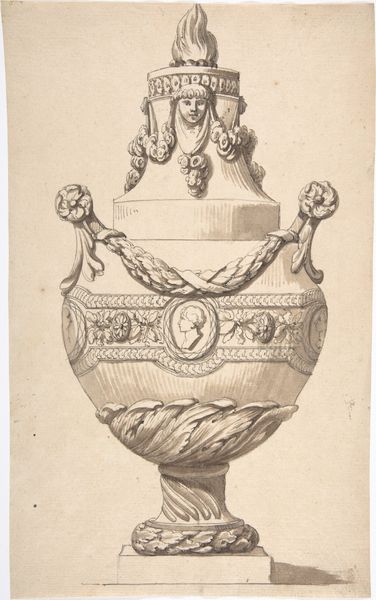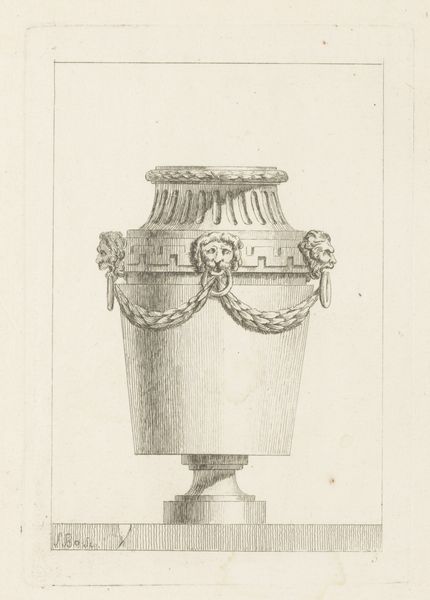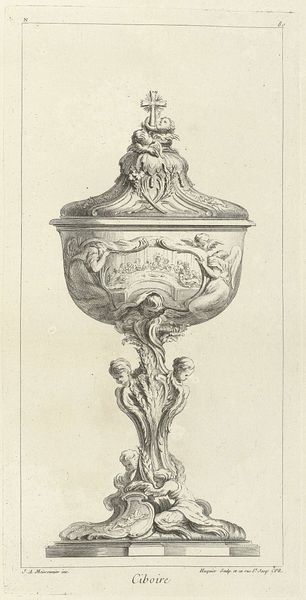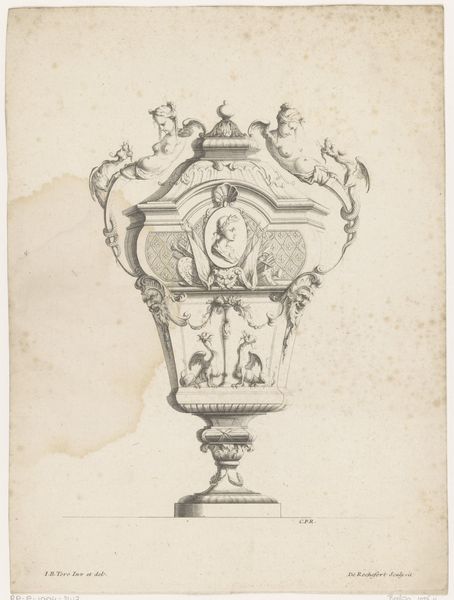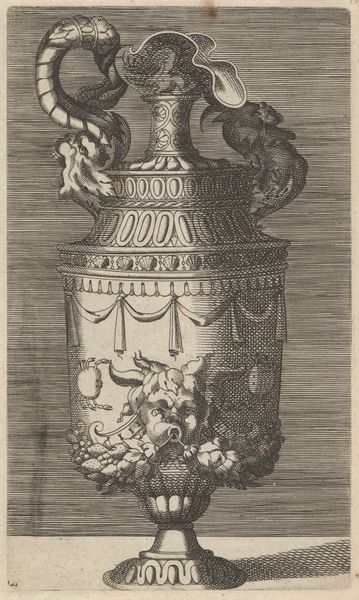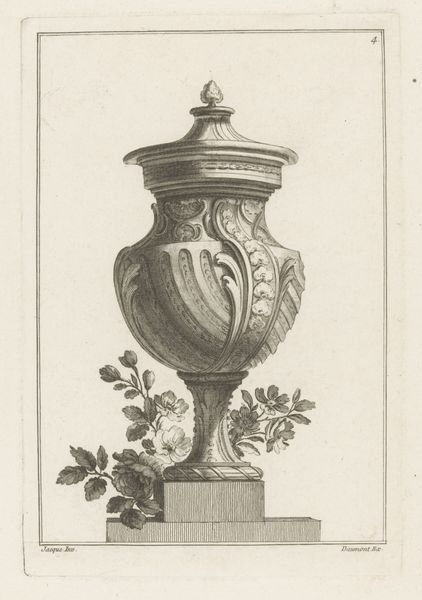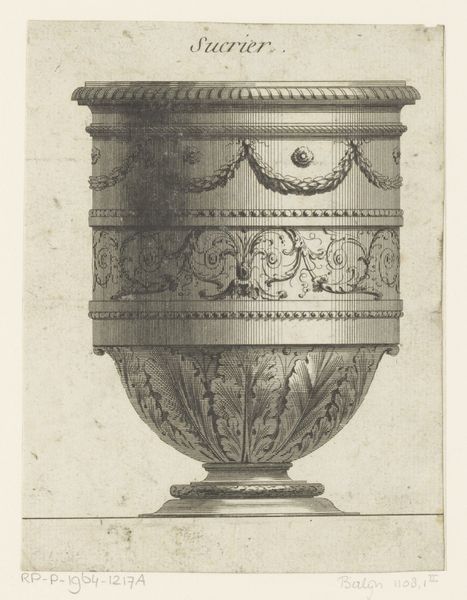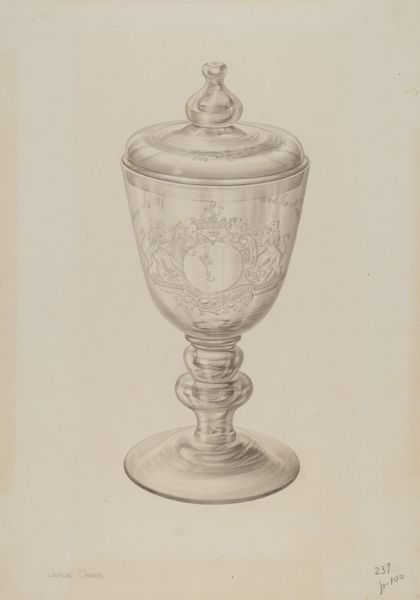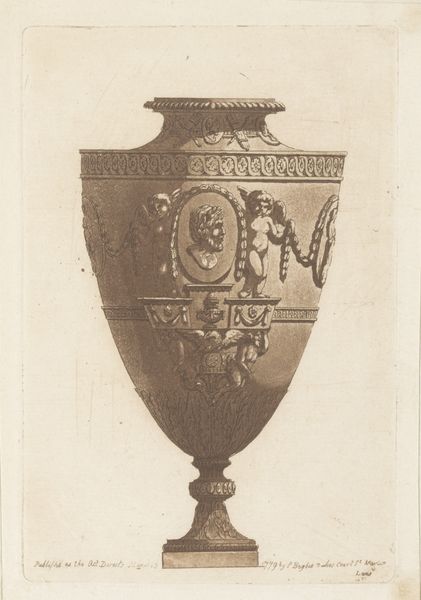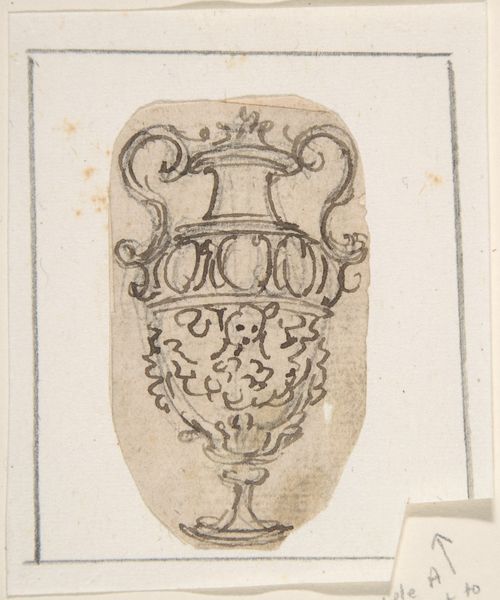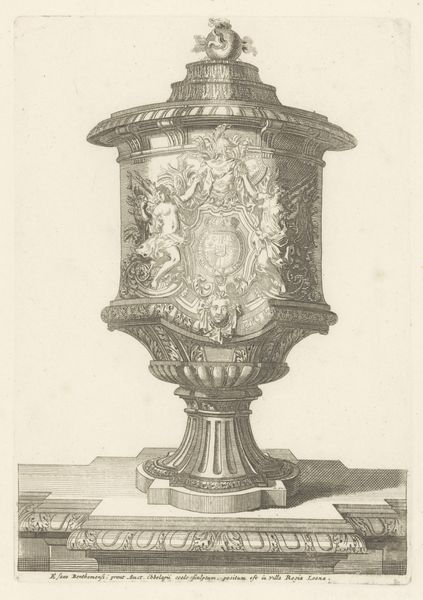
graphic-art, print, etching, engraving
#
graphic-art
# print
#
etching
#
old engraving style
#
history-painting
#
decorative-art
#
engraving
Dimensions: 160 mm (height) x 115 mm (width) (bladmaal)
Editor: This is an engraving from 1860 by Julius Magnus-Petersen, titled "Det slesvigske Eiderstrømsbæger," depicting a decorative cup. It’s quite detailed, almost neoclassical in style. The imagery seems tied to a specific historical event, giving it a very formal, commemorative feeling. How do you interpret this work? Curator: This piece gives us an interesting glimpse into how history and identity were being constructed in 19th century Denmark, particularly in relation to the Schleswig region. What stands out is the celebration of a specific historical moment. I wonder how it participated in the narratives that were shaping Danish national identity at that time? And whose voices are absent here? Editor: It looks like it's celebrating a specific historical event of 1720 based on the circular frame design and text. Curator: Exactly. Think about the context. The Second Schleswig War was in 1864. What role do you think this representation of a shared past played in bolstering national sentiment amidst ongoing territorial disputes? Editor: It seems like a visual tool meant to evoke a shared past, fostering a sense of unity. Were such commemorative objects typically accessible to all levels of society or mostly intended for the elite? Curator: That’s a critical question. Objects like these often served to disseminate particular narratives, and access was certainly stratified. Considering this, we need to be critical about whose story it tells, and whose it silences. Can we use its presence in a national art museum to start a conversation on historical memory? Editor: I never thought about an engraving of a cup holding so much social and political weight. I now appreciate that looking into historical context reveals its function as a tool for constructing and reinforcing national identity during a turbulent period. Curator: Indeed. Seeing art as enmeshed within political and social forces, particularly its capacity to reflect or resist those structures, lets us perceive overlooked perspectives and facilitates understanding of the cultural value attributed to such artwork.
Comments
No comments
Be the first to comment and join the conversation on the ultimate creative platform.

